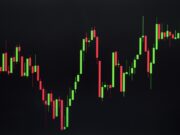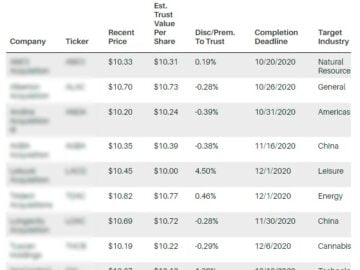Impressive Q3 earnings have helped lift stocks to new highs. Despite a slight pullback this morning, the major indices are on track for their fourth positive week in a row and their best month since last November. With stocks at their highs amid looming regulatory, geopolitical and inflationary concerns, it will be interesting to see how the next few weeks play out.
Challenges for the stock market could arise at any time without warning. The situation becomes incredibly fragile when stocks are in record-high territory like they are right now. Unfortunately, there is no crystal ball that can tell us what the future holds. That’s why it’s essential for investors to educate themselves about the tools available and prepare themselves for any circumstance.
We thought today would be an excellent time to discuss an essential tactic that allows investors to benefit when things get ugly by taking a position opposite a losing market. It’s not risky short-selling. In fact, many of the Wall Street pros consider this tactic a more logical alternative to short-selling. It’s an important tool to have in your tool kit in times of heightened volatility. Read on to learn how to put this valuable tactic into play.
Traders who are looking to benefit from sliding stocks often turn to short-selling. The main risk of traditional short-selling is that while profit is capped (a stock can only fall to zero), the risk is theoretically unlimited. Of course, other tactics can be used to cover a position at any time, but with a short-selling position, inventors are at risk of receiving margin calls on their trading account if their short position moves against them.
Inverse or “short” ETFs are another option that allows you to profit when a particular investment class declines in value. Some investors use inverse ETFs to profit from market declines, while others use them to hedge their portfolios against falling prices.
Over short periods, you can expect that the inverse ETF will perform “the opposite” of the index, but a disconnect may develop over longer periods. Inverse ETFs will decline as an asset appreciates over time. For that reason, inverse ETFs typically are not seen as suitable long-term investments. Furthermore, frequent trading often leads to an increase in fund expenses, and some inverse ETFs have expense ratios of 1% or more.
When approached correctly, inverse ETFs can be excellent day-trading candidates and highly effective short-term hedging tools. There are several inverse ETFs that can be used to profit from declines in broad market indexes, such as the Russell 2000 or the Nasdaq 100. Also, there are inverse ETFs that focus on specific sectors, such as financials, energy, or consumer staples.
With $4 billion in assets, the ProShares Short S&P 500 (SH) is the largest inverse fund by value. Commonly used by investors as a hedging vehicle, the fund strives to deliver the inverse performance of the S&P 500 (SPX). If you’re concerned about the stock market falling, then this fund that moves in the opposite direction of the largest 500 U.S. corporations is the simplest way to protect yourself.
It’s important to note that SH is designed to deliver inverse results over a single trading session, with exposure resetting on a monthly basis. Investors considering this ETF should understand how that nuance impacts the risk/return profile and realize the potential for “return erosion” in volatile markets. SH should definitely not be found in a long-term, buy-and-hold portfolio. The fund comes along with an expense ratio of 0.9%.
Where to invest $1,000 right now...
Before you consider buying ProShares Short S&P 500, you'll want to see this.
Investing legend, Keith Kohl just revealed his #1 stock for 2022...
And it's not ProShares Short S&P 500.
Jeff Bezos, Peter Thiel, and the Rockefellers are betting a colossal nine figures on this tiny company that trades publicly for $5.
Keith say’s he thinks investors will be able to turn a small $50 stake into $150,000.
Find that to be extraordinary?
Click here to watch his presentation, and decide for yourself...
But you have to act now, because a catalyst coming in a few weeks is set to take this company mainstream... And by then, it could be too late.
Click here to find out the name and ticker of Keith's #1 pick...











